It is impossible to overstate the impact Sergio Leon’s Spaghetti Westerns had on cinema, by the 1960s the Hollywood Western had become a rather bland affair with most of its content dominating the airwaves with such shows as Gunsmoke, The Rifleman and Have Gun Will Travel but then along came up and coming Italian director Sergio Leon who introduced the world to a poncho wearing cigarillo smoking antihero portrayed by television actor Clint Eastwood. Although the character had a name in each film, he is still conventionally known as "the man with no name" which is mostly attributed as a marketing gimmick to allow the easily bundling of the three films.
A Fistful of Dollars (1964)
When it comes to remakes Sergio Leone's A Fistful of Dollars is a perfect example of how to do it right. There's no point in doing a carbon copy of the original and in the case of A Fistful of Dollars Leone and company took the basic plot of Akira Kurosawa's Yojimbo and then did a complete cultural shift by transplanting the Samurai tale into the Old West. It's pretty much genius.
It was A Fistful of Dollars that basically kicked started the modern action hero with Clint Eastwood playing a far from the squeaky clean hero that had been the standard Hollywood stock type for decades, with the likes of Gary Cooper or Jimmy Stewart winning the fait hand of Grace Kelly, instead, Leone gives us an anti-hero who is a violent enigma with a moral code that isn't quite readable, with him killing for money which is not a typical hero motivation, and Eastwood was brilliant as this taciturn man of action. This film also introduced the world to Sergio Leone's trademark extreme close-up which was wonderfully combined with Ennio Morricone's amazing score.
It's hard to imagine a world without this iconic character that Leone and Eastwood created and even more surprising that it happened at all considering Eastwood was mostly known as the squeaky clean Rowdy Yates from the television series Rawhide, a character far from the poncho wearing Man with No Name.
Note to future filmmakers: When tackling a remake it is important to get permission first before going ahead with your project. Kurosawa sued the filmmakers for breach of copyright and won 15% of the worldwide distribution. Apparently, Kurosawa made more money off of this movie than he did on Yojimbo.
For a Few Dollars More (1965)
Where A Fistful of Dollars was about one man against great odds For a Few Dollars More, on the other hand, is almost a buddy picture with Clint Eastwood's enigmatic anti-hero encountering and eventually teaming up with someone who is possibly even better at gunplay than he is, which is a good thing considering who the villain of this piece is.
When it comes to villains Gian Maria Volontè's crazed killer Indio is easily one of the most memorable, not only is he a ruthless murder - he kills women and infants without a second thought and brutally takes out his own men to increase his profits - but he's also a canny planner and the bank heist and the following set-up of the two bounty killers illustrates just how crafty he was. This larger-than-life villain was pretty much required if you are going to put him up against the likes of Clint Eastwood and Lee Van Cleef.
And speaking of Lee Van Cleef, the character of Col. Douglas Mortimer is a wonderful foil/slash partner for Clint Eastwood's rival bounty killer - I like how they are "Bounty Killers" not "Bounty Hunters" - and his onscreen presence is like a Western version of the Grim Reaper only to be revealed as a more complexly motivated character as the film progresses.
It was with For a Few Dollars More that the Leone style fully emerges as all his narrative tools and trademark cinematic tools are in full swing with this second entry in The Man with No Name Trilogy. We get all those long gunfighter standoffs, highlighted by Ennio Morricone's haunting score and its trademark whistling and Sergio Leone's love of extreme close-ups shots that are lit as if a Rembrandt painting, which all goes towards making this one helluva sequel.
The Good the Bad and the Ugly (1966)
With The Good, the Bad and the Ugly Sergio Leone moved the Spaghetti Western into the realm of the operatic and not just via Ennio Morricone's stellar score but by increasing the scope of the story to include numerous locations across the West. No longer would the plot of his movie revolve around small dusty towns or abandoned churches, instead, vast deserts and battlefields would be this film's landscapes.
In this outing, both Clint Eastwood and Lee Van Cleef return - though not as the same characters from in the previous film - and the film's protagonist would be that of Tuco, the character played by the great Eli Wallach, as the bulk of the movie follows his story. In fact, each of the Man with No Name pictures had a different protagonist, the first film obviously had Clint Eastwood's killer-for-hire but in For a Few Dollars More it's revealed that we weren't watching a Western "Buddy Picture" - as one may have assumed at a glance - but in reality, it was a revenge picture with Lee Van Cleef's character being the central motivating force for the story. Now, in the case of The Good, the Bad and the Ugly we have what is basically a treasure hunt with three disparate characters after the same goal but it is the brutal Tuco who we the audience spend most of our time with.
When one steps back and looks at The Good, the Bad and the Ugly as a whole it comes across as having a very episodic nature with our trio of characters stumbling from one misadventure to another with each event almost like a chapter in a movie serial. Then we have the parts of the movie where our "heroes" wander into and out of a Civil War movie as if the actors had stepped onto the wrong soundstage by mistake. Do Blondie and Tuco teaming up with the Union Army to defend a bridge have any bearing on the plot? Absolutely not, it's just an exciting set-piece that works as a cool diversion but it neither moves the story forward nor does it give us any new character information and it's because of these kinds of "indulgences" that The Good, the Bad and the Ugly is allowed to expand into being a three-hour-long epic. Now, I'm not saying this is necessarily a bad thing but it is quite the departure from the previous two films.
Then there is the film's detour into another remake of Beau Geste. I know that sounds crazy but hear me out, at one point in the film Blondie and Tuco are captured by the Union Army and brought as prisoners to Fort Battervillet, but in this fort, we find Lee Van Cleef's Angel Eyes has been employed as a Union Sergeant - how he pulled this off is never addressed or explained - and we learn that Angel Eyes has been torturing and robbing prisoners, much to the disapproval of the fort's commander, but as the commander is on his death bed there is no one to stop him. Anyone familiar with the classic adventure movie Beau Geste will immediately recognize Angel Eye's has suddenly stepped into the role of sadistic Sergeant Markoff from that film, which also had a dying commander who disapproved of his Sergeant's sadistic actions, but there is no follow-through with this "homage" to that film as Leon is quick to move onto the next epic set-piece.
This bizarre structure of The Good, the Bad and the Ugly somehow works in the film's favour, this is Sergio Leon we're talking about and his blend of visuals and storytelling are bar none fantastic, and when the film finally reaches its climax we the audience are left feeling as if we'd been put through the wringer along with the trio of treasure hunters. Leon's style has been oft been imitated but I don't think anyone has ever quite captured what he achieved with these three films.
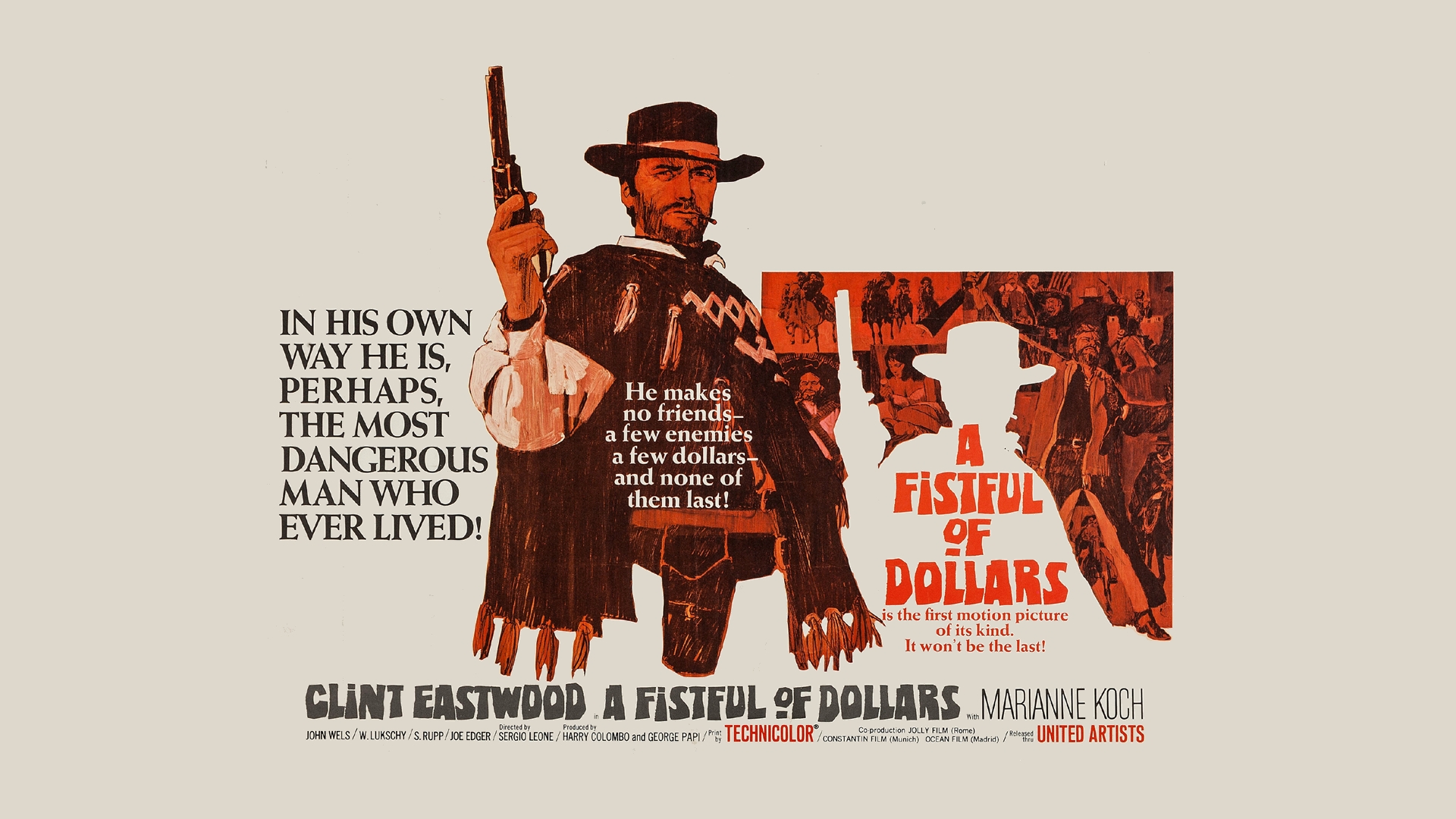
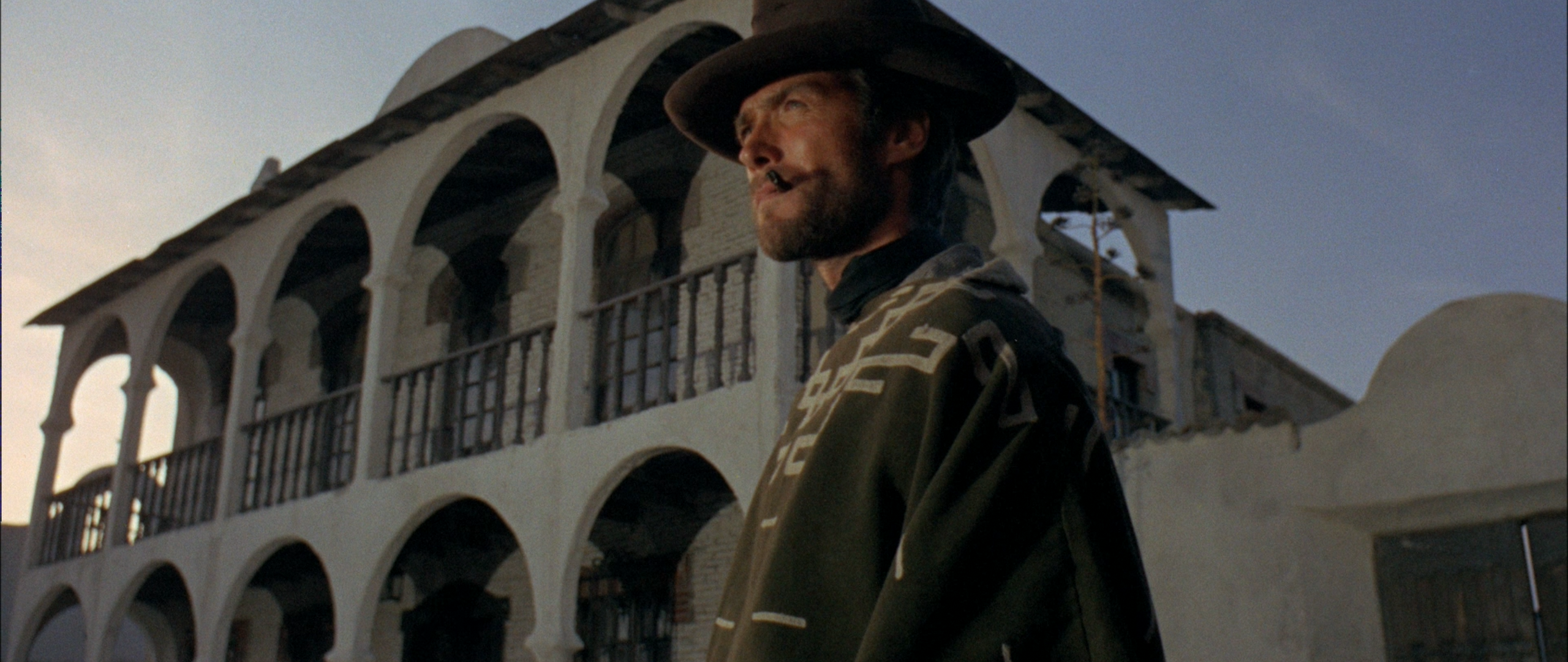

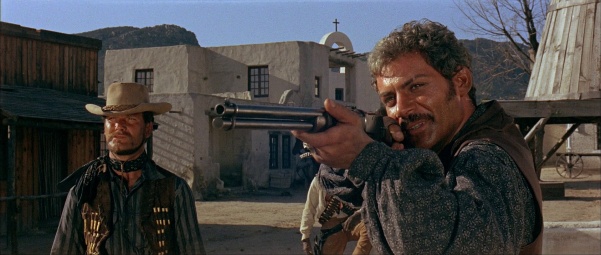
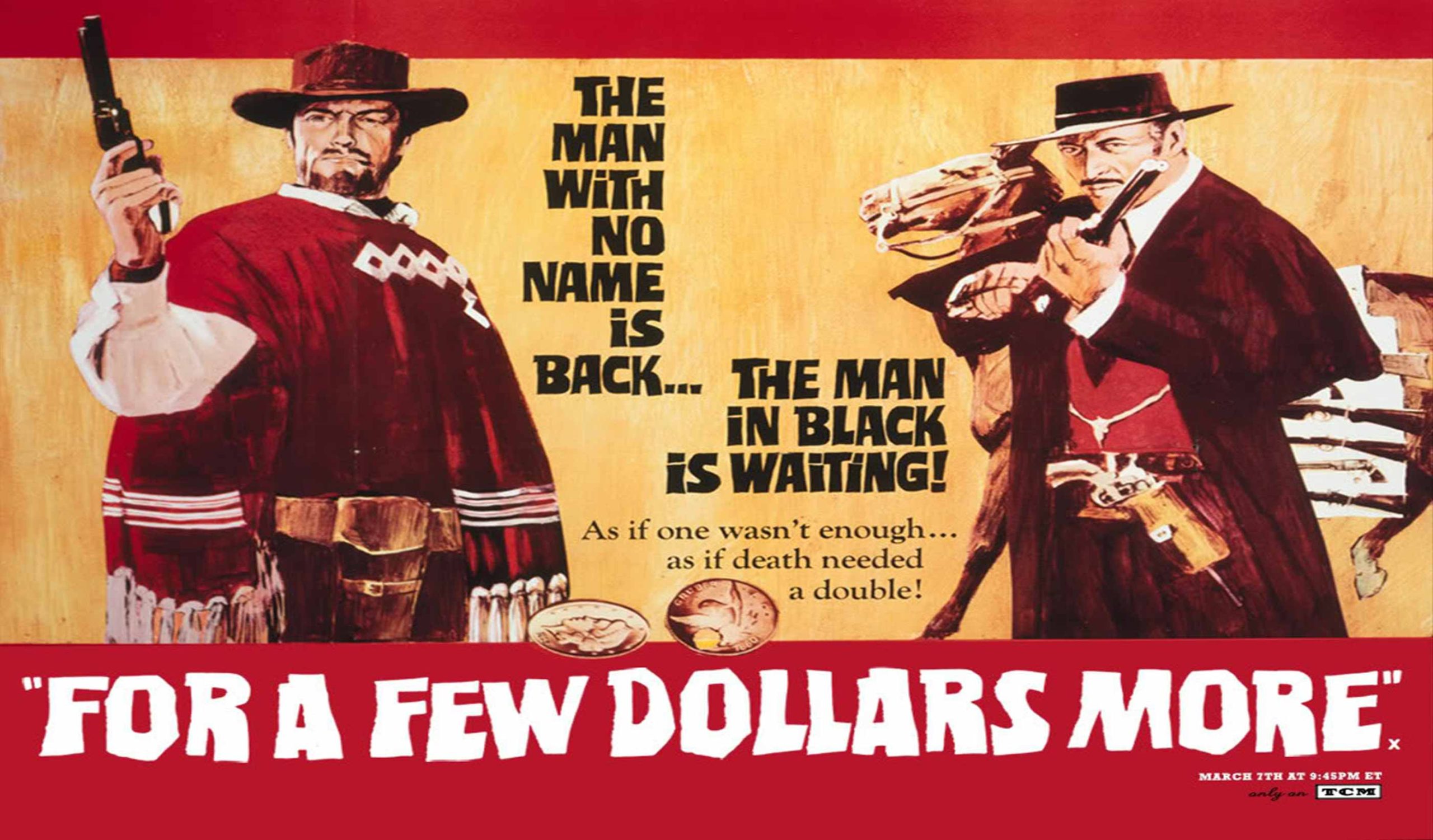
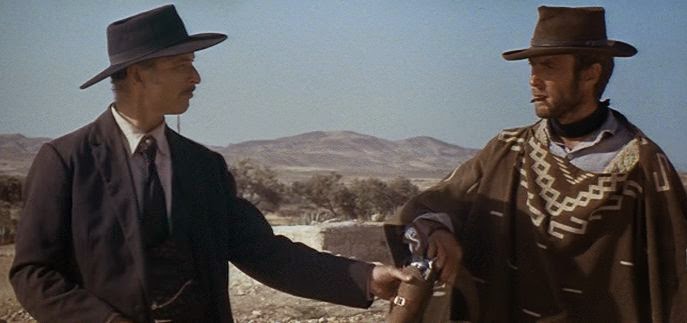
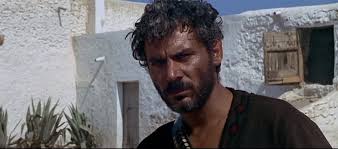
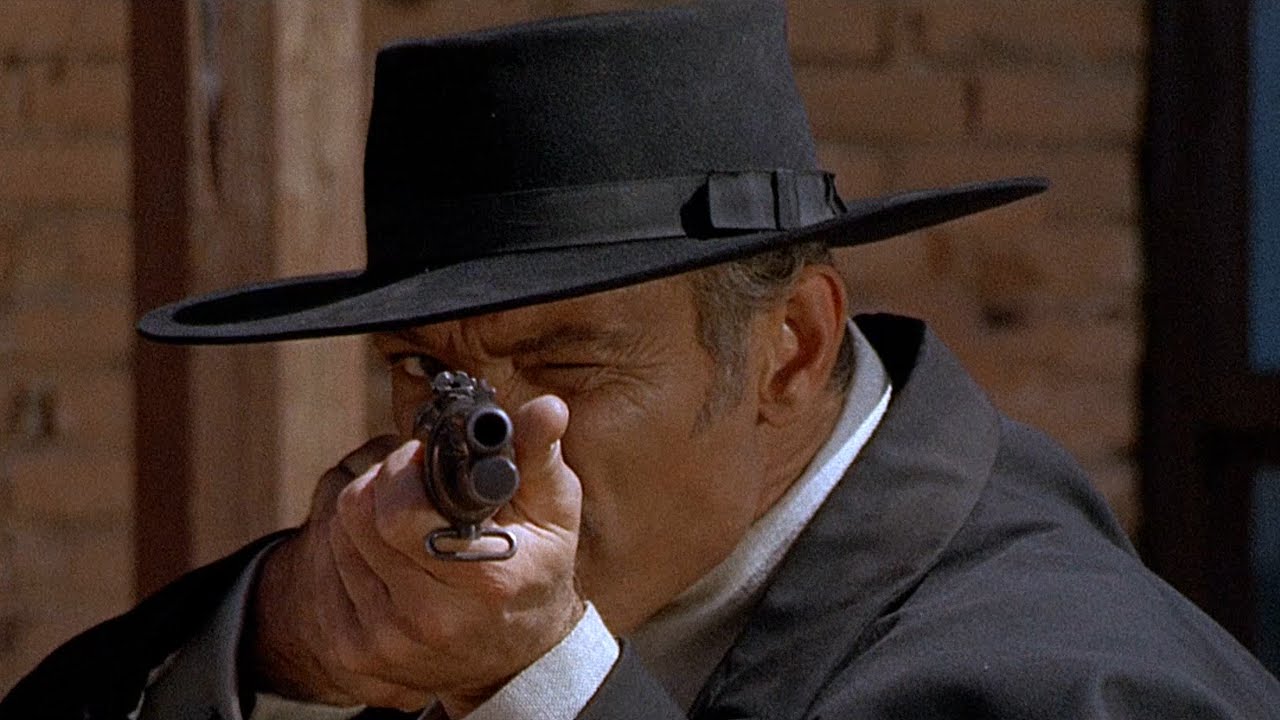
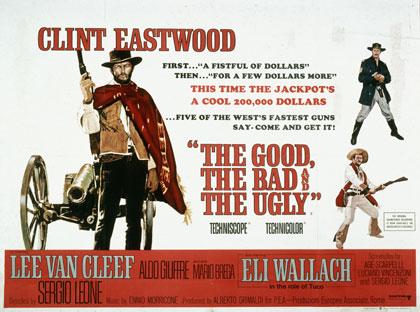
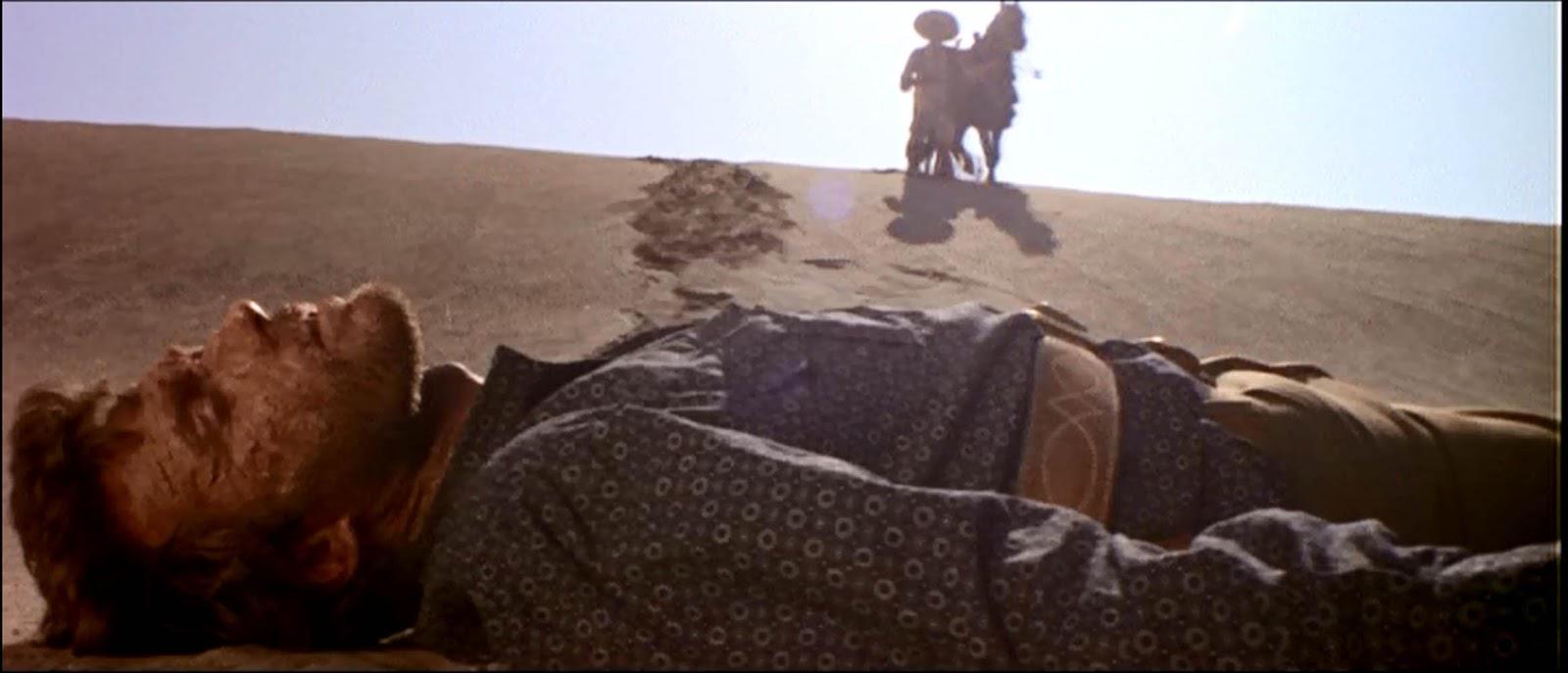
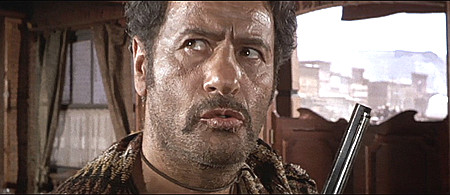
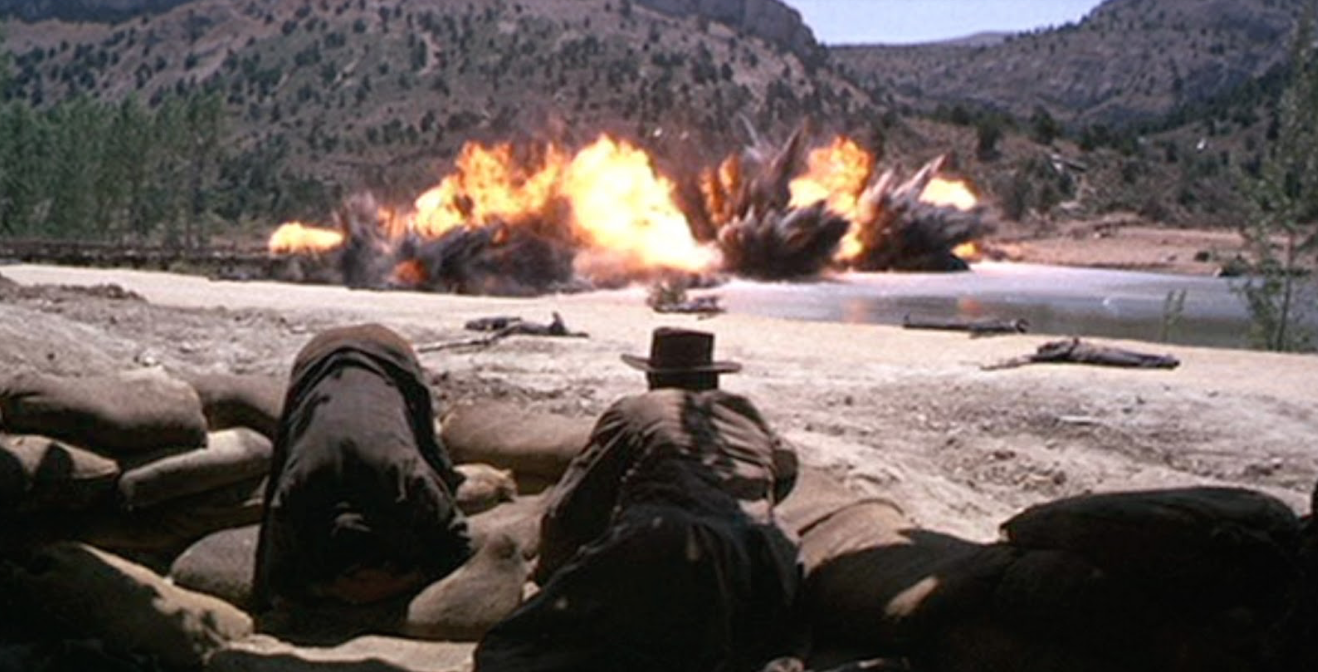
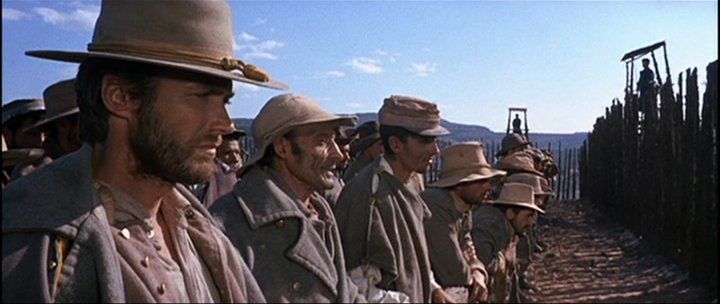

No comments:
Post a Comment